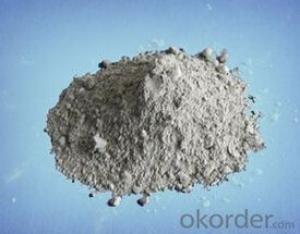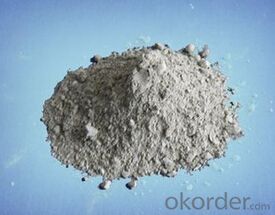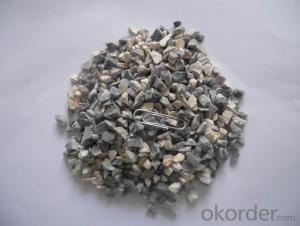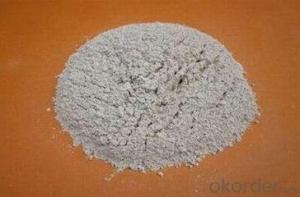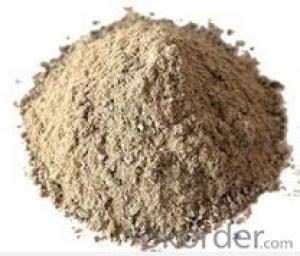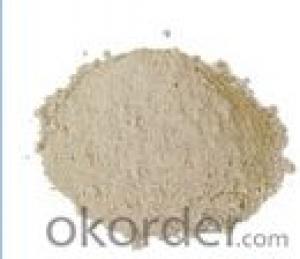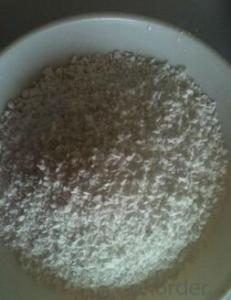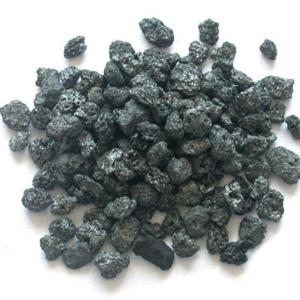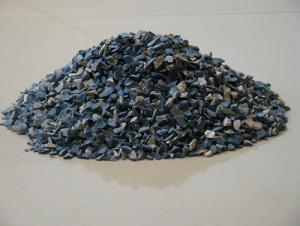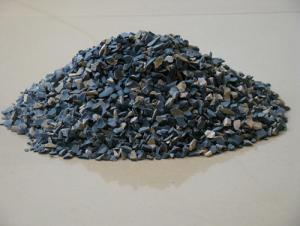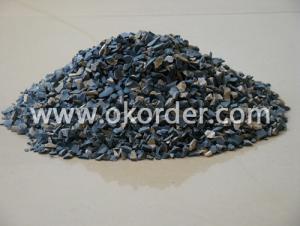Raw Materials for Refractory Castable for Industry Furnace
- Loading Port:
- China Main Port
- Payment Terms:
- TT OR LC
- Min Order Qty:
- -
- Supply Capability:
- -
OKorder Service Pledge
OKorder Financial Service
You Might Also Like
Specifications
a.high performance,good corrosion resistance
b.high refractoriness,good wear resistance
c.good heat shock
d.ISO9001-2000
high quality refractory castable for industry furnace
Refractory castable description
We are specialized in refractory castables,Our company produce all kinds of castables.
such as unshaped refractory materials,self-flow castable,low-cement castable,ultra-low cement,cement-free castable,quick drying castable,plastic castable and dense castable and so on.
Refractory castable annual supply
Our company has a dozen cooperative production factories which are better in productive technology and quality management. All the factories has passed ISO9001 quality management system certification. And the annual supply of refractory castable is 100,00-200,00 tons.
Refractory castable features
1. High refractoriness, High refractoriness under load.
2. High density, low porosity.
3. Good slag resistance and corrosion resistance.
4. High strength and wear resistance.
5. Good resistance to flake performance.
6. Good thermal shock stability.
7. Scouring resistance
Refractory castable technology parameters
Item | SLB-1 | SLB-2 | SLB-3 | SLB-4 | |
Chemical composition | AL2O3 ≥ | 45 | 65 | 72 | 80 |
BD | 110°C×24h | 2.3 | 2.65 | 2.65 | 2.75 |
| 1500°C×3h | 2.25(1250°C) | 2.65(1400°C) | 2.65(1400°C) | 2.7(1450°C) |
Linear change rate(%) | 110°C×24h | -1~0 | -1~0 | -1~0 | -1~0 |
| 1500°C×3h | -0.4~0(1250°C) | -0.4~0(1400°C) | -0.4~0(1400°C) | ±0.5~0(1450°C) |
Flexural strength | 110°C×24h | 40(1250°C) | 5 | 5 | 6 |
| 1500°C×3h | 4 | 8(1400°C) | 8(1400°C) | 10(1450°C) |
Compressive strength | 110°C×24h | 6(1250°C) | 40 | 40 | 45 |
| 1500°C×3h | 30 | 55(1400°C) | 55(1400°C) | 55(1450°C) |
Add water(%) | 6~7 | 5~6 | 5~6 | 6~7 | |
Self-flow volume(mm) | 170-210 | 170-210 | 170-210 | 170-210 | |
Service temperature(°C) | 1300 | 1450 | 1450 | 1500 | |
FACTORY:
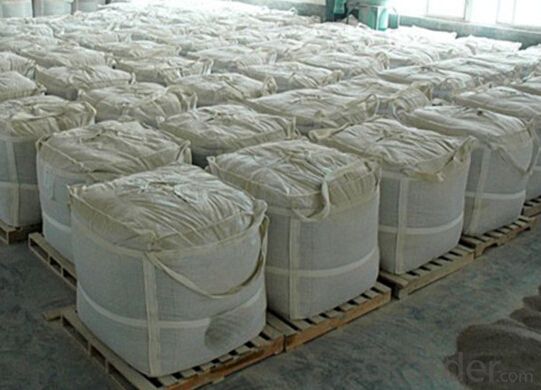
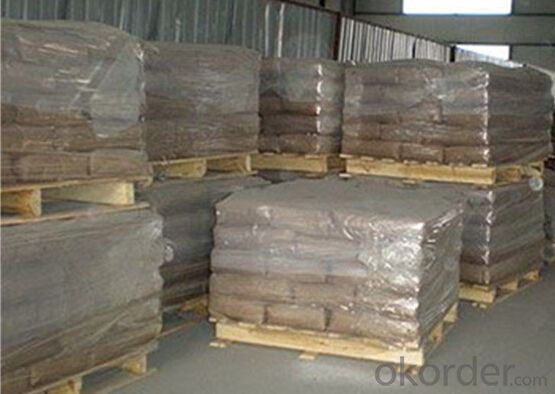
- Q: How long is the duration of fire resistance of autoclaved flyash-lime bricks?
- The compressive strength of the autoclaved flyash-lime bricks is generally higher, which can reach 20MPa or 15MPa, at least 10MPa, and it can withstand the 15 freeze-thaw cycles. Besides,fly ash brick is a kind of potential active hydraulic material. In the humid environment, it can continue to produce hydration reaction and make the internal structure of the brick is more dense, which is conducive to improvement of the strength. It is found in experiments and many investigations that sample some carbide which is used for foundation, plinth and drains, after one or twenty years of freezing thawing and wetting drying, some bricks have been completely carbonized, but strength is not reduced, increased instead. This is one of the merit of autoclaved flyash-lime bricks.
- Q: Refractory net
- Foreign enterprises created not only for profit, but a career, hope to be able to last forever; domestic, especially private enterprises, most of them do not have such a vision, only to a loophole, cash, so never to do this industry.Welcome to discuss the statements of a school.
- Q: How much is the content of boron carbide in refractory material?
- Boron carbide is used in refractory material. For example, generally we could add 0.2% of boron carbide into magnesia carbon bricks. It is suggested that 0.5% is enough, because it has strong effect in boosting melt. It is said that 0.5% would be alright since boron oxide after oxidation belongs to material of low melting point, so the amount should be limited within 0.5%-1%,
- Q: Where is the distributing center of refractory materials in China?
- The construction of Gongyi Chinese refractory chemical industry professional market is a street in Yongan to implement the spirit of the six plenary session of the four session of the Gongyi municipal Party committee, the adjustment of economic structure, an important step in developing the service industry out of the. First, to promote the rapid development of the third industry. Through the improvement of refractory trade logistics system, make Yongan do truly become the first-class refractories trade and logistics center, driven by the refractory industry from the production area to the exhibition, logistics field extension and transformation, become refractory chemical industry center, Yongan office to promote the optimizing and upgrading of economy. Two is to promote intensive land development. Through the integration of resources, the unified planning of the reserved land, intensive development according to the standard of the city, the introduction of powerful investors, construction of large-scale projects. Three is to further create a business atmosphere in Yongan. Refractory chemical professional market operation, will promote the overall development of Yongan to do business, increase the flow of people, logistics, information flow, capital flow, more to promote the rapid development of the third industry in Yongan office.Gongyi Chinese refractory chemical industry professional market completion, will further promote the development of Yongan street service industry, accelerate the pace of economic restructuring, will run the streets of industrial upgrading has played a great role in promoting. Yongan road street is unprecedented high spirited gesture, innovation and development opportunities, so that industrial upgrading and optimization of the pattern to accelerate the realization of, we are convinced that Yongan's tomorrow will be better!
- Q: Which industry does the metallurgy and thermal insulating and refractory material belong to?
- It belongs to the refractory industry, which has its own trade association.
- Q: What does the function of SiC for refractories?
- Anti-wear! High intensity!
- Q: Who knows about ranking rules of fireproofing thermal insulation materials for exterior wall?
- You can try the following way to give a brief introduction of the fire?rating classification of external wall thermal insulation materials. 1. the building materials are divided into following categories in terms of combustion performance according to the national standard of GB8624-97. A-level: Incombustible building material: materials almost don't burn. B1-level: nonflammable building material: these materials are good at resisting flame. It is difficult for them to burst into fire when coming across open fire in the air or at high temperature. It will not quickly get wilder and when the fire source removes, it will be extinguished immediately. B2-level: Combustible building material: combustible building materials can play a certain role in flame resistance. It will immediately burst into flames when coming across open fire or at high temperature, and will lead to fire spreading, such as wooden column, timber roof truss and timber beam as well as stairs. B3-level: Inflammable building material: Inflammable building materials are highly flammable with no flame retardant ability. The fire risk is high. 2.The exterior wall thermal insulation materials can be classified according to fire rating. 1). Insulation materials with A-level combustion performance: rock wool, glass wool, foam glass, foamed ceramics, foam cement, hole-closed perlite, etc. 2). The insulation materials with B1-level combustion performance: specially-treated extruded polystyrene board(XPS)/ specially-treated polyurethane(PU), phenolic aldehydegelatine powder polyphenyl granule,etc. 3). Insulation materials with B2-level combustion performance: molding polystyrene board(EPS), extruded polystyrene board(XPS), polyurethane(PU), polyethylene(PE), etc.
- Q: What is the fire endurance of fireproof glass cotton?
- The highest temperature of fireproofing glass wool can be above 200 degrees, so it can be used for a long time,it's difficult to judge the special usage time, but its usually about 3 months and 8 hours every day.
- Q: Which are roofing fireproofing material?
- (1) Foamed concrete is a kind of fire-proof thermal inuslation matertial featured by good fire resistance and thermal insulation. Besides, it is also characterized by excellent sound proofing, penetration resistance, easy construction, safety and environmental protection without toxin and pollution. (2) Foam glass is featured by light weight, small heat conductivity coefficient and water absorbption, non-inflammability, fire resistance, high strength, no moulding, corrosion resistance, non-toxin and stable physical and chemical properties and thus widely used petroleum, chemical engineering and underground construction. It is also featured by thermal insualtion, heat/cold preservation and sound absorbption and thus can be used for thermal insulation of external wall and roof of civil builduing. Foam glass is featured by stable chemical property, easy to be processed and not easy to deforme, and durable. (3) With slag, basalt and other natural ore as the main raw material, rock wool, mineral wool and its products are made by high temperature melting into fiber, and then processing with binder. It has low thermal conductivity, fire resistance, easy construction and good effects of energy saving and thus is highly cost-effective. (4) With phenolic foam material as main material, phenolic resin plate is made by foaming thermoset phenolic resin. It is featured by light weight, fire resistance, no burning in the air, no smoking, non-toxin, no dropping and non-embrittlement and thus is an ideal thermal insulation material used in HAVC projects. Due to its high obturator formamen rate, low heat conductivity coefficient, good thermal insulation, water resistance and water vapor permeability, phenolic foam is an ideal thermal insulation material.
Send your message to us
Raw Materials for Refractory Castable for Industry Furnace
- Loading Port:
- China Main Port
- Payment Terms:
- TT OR LC
- Min Order Qty:
- -
- Supply Capability:
- -
OKorder Service Pledge
OKorder Financial Service
Similar products
Hot products
Hot Searches
Related keywords
